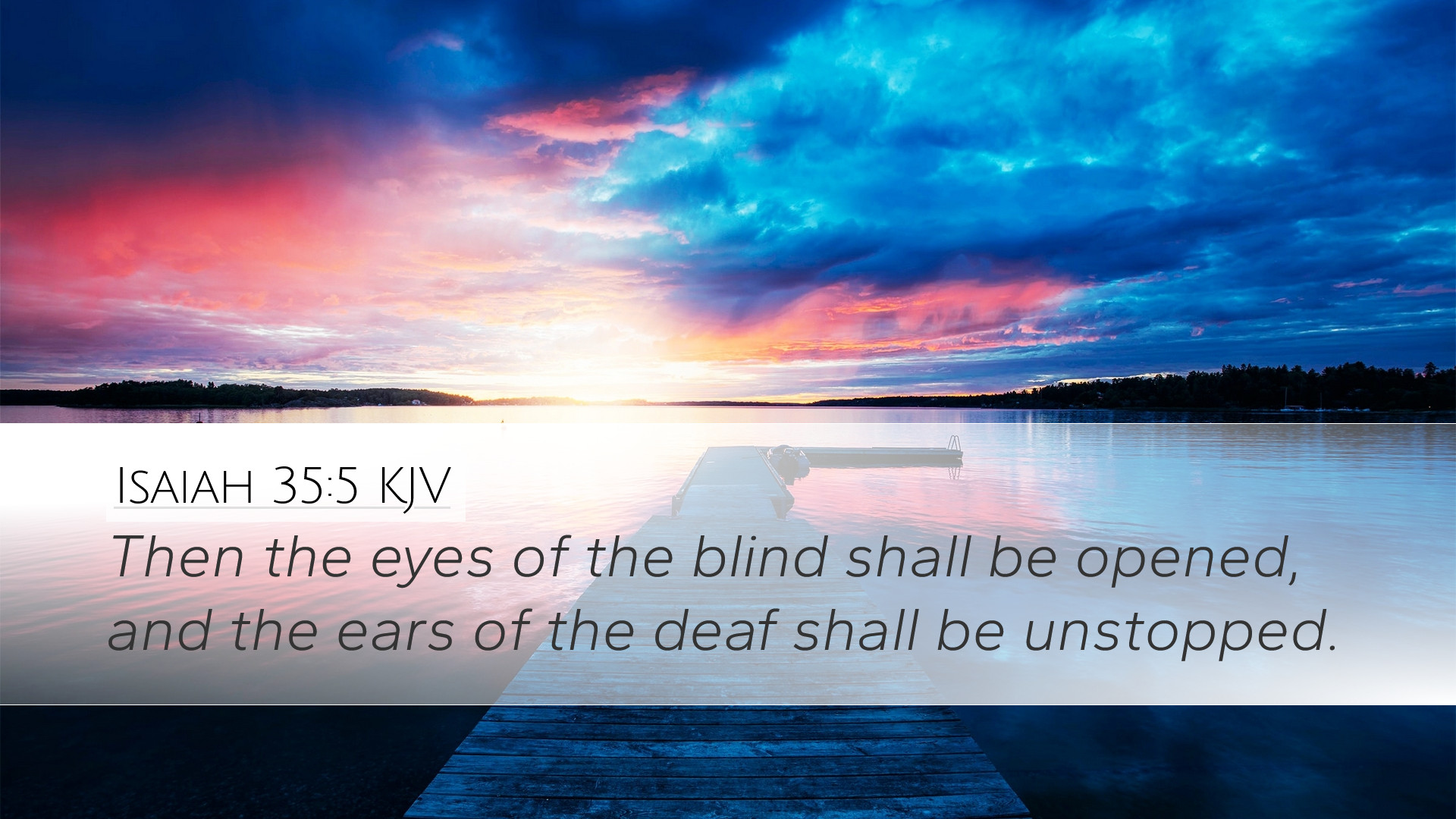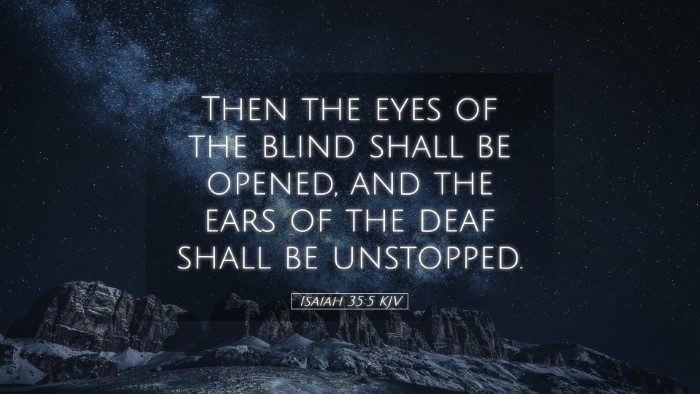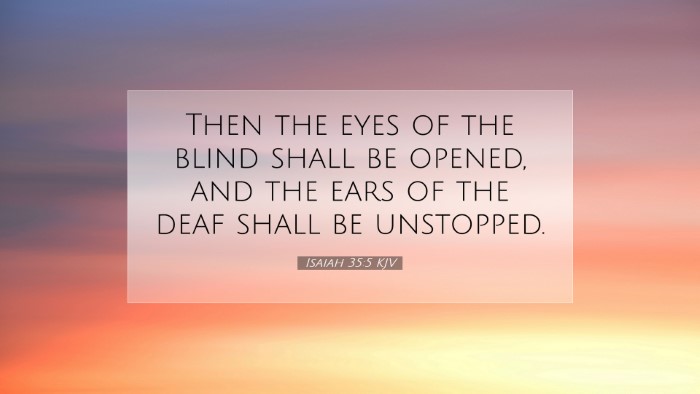Commentary on Isaiah 35:5
Text of Isaiah 35:5 (KJV): "Then the eyes of the blind shall be opened, and the ears of the deaf shall be unstopped."
Introduction
This verse sits within a prophetic context that speaks of restoration, hope, and divine intervention. The prophetic imagery used by Isaiah paints a picture of a future where physical and spiritual ailments are remedied as a sign of God's redemptive power.
Context and Themes
Isaiah 35 is often viewed as a passage of hope amid despair. The chapter heralds a significant transformation where desolation turns into prosperity and blindness into sight. This theme is crucial for understanding the implications of this verse:
- Restoration: The imagery of the blind and deaf reflects not only physical ailments but also spiritual blindness and deafness to God's voice.
- Messianic Hope: This verse is often interpreted through the lens of messianic prophecy, pointing to Jesus Christ as the fulfillment of these promises.
- Divine Intervention: The promise emphasizes God's role as a healer who acts on behalf of His people.
Commentary Insights
Matthew Henry's Perspective
Matthew Henry elaborates on the verse by focusing on the restoration of both the body and spirit. He notes that the phrase "the eyes of the blind shall be opened" signifies a miraculous act of God, representing both physical sight and the ability to perceive spiritual truths. Henry emphasizes that this restoration is an act of grace, portraying the kingdom of God where such miracles will be commonplace.
Albert Barnes' Analysis
Albert Barnes emphasizes the comprehensive nature of the healing described by Isaiah. He notes that the promise extends beyond mere physical healing to a broader spiritual application. Barnes references the New Testament's use of this scripture, indicating that Jesus’ ministry fulfills these prophetic declarations, highlighting the dual nature of salvation which includes the healing of both body and soul.
Adam Clarke's Insights
Adam Clarke offers a rich theological reflection on the implications of this passage. He points out that the metaphor of blindness and deafness is representative of mankind's fallen state. Clarke argues that the opening of blind eyes and unstopping deaf ears symbolize the illuminating power of the gospel, bringing enlightenment to those who walk in darkness. This aligns with Clarke’s broader theological understanding of God’s redemptive plan through Christ.
Spiritual Significance
The spiritual significance of Isaiah 35:5 cannot be overstated. It serves as a powerful reminder of God’s promise to bring restoration to individuals and communities. The act of opening blind eyes is emblematic of God’s desire to bring enlightenment, understanding, and a personal relationship with Him. This verse invites pastors, students, and theologians to reflect on how God is presently opening eyes and ears to receive His truth.
Application for Today
The relevance of Isaiah 35:5 extends beyond ancient prophetic literature; it calls for action and reflection in contemporary ministries. Below are some applications for personal faith and pastoral practice:
- Evangelism: Emphasize the importance of sharing the gospel, which opens eyes and hearts to spiritual truths.
- Spiritual Healing: Acknowledge and pray for those who are spiritually blind or deaf, seeking God’s intervention in their lives.
- Community Outreach: Engage in acts of compassion that reflect God’s healing, showing that restoration is possible under His care.
Conclusion
In conclusion, Isaiah 35:5 encapsulates a profound message of hope and restoration. The insights provided by commentaries shed light on the multifaceted applications of this verse. As we engage with this powerful scripture, may we be reminded of our role in conveying the light of Christ to a world in need of healing—both physically and spiritually.


